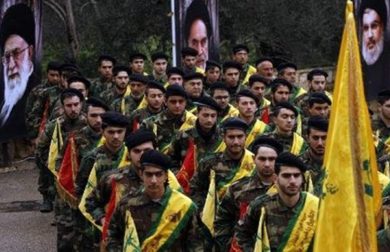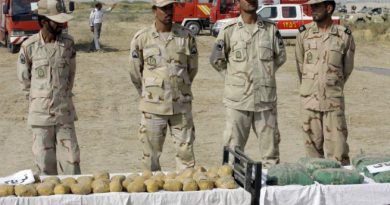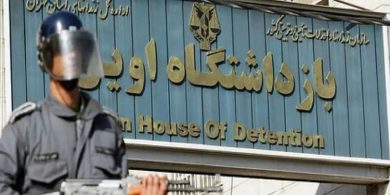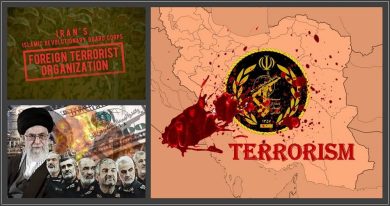In the Islamic Republic of Iran, where repression is law and surveillance is a weapon, courage is often female.
For over four decades, women in Iran have stood at the forefront of a defiant and enduring resistance to authoritarianism. They have challenged one of the world’s most ideologically rigid and violently repressive institutions—the Islamic Revolutionary Guard Corps (IRGC). Despite arrests, torture, exile, and even death, women have refused to yield. In classrooms, courtrooms, prisons, newsrooms, and on the streets, they have risked everything to defy the IRGC and the system it upholds.
This is a tribute to their stories—those known and unknown. These are the faces of courage.
1. The IRGC’s War on Women
To understand the scale of women’s resistance, we must first understand the IRGC’s role in enforcing gender-based oppression. Created in 1979 to “defend the revolution,” the IRGC has grown into a military, economic, and ideological empire that controls vast swathes of Iran’s domestic and foreign policy.
But central to its mission is the preservation of the regime’s Islamic ideology, which rests heavily on patriarchal control. That means regulating women’s bodies, choices, and movements.
The IRGC enforces:
• Mandatory hijab laws
• Gender segregation in schools, transport, and public spaces
• Arrests for “immoral behavior”
• Online monitoring of unveiled women
• Psychological and sexual abuse in detention
• Surveillance of women’s rights activists and organizations
Despite these brutal tactics, women across Iran have become the regime’s most formidable adversaries.
2. Mahsa (Jina) Amini: A Name That Sparked a Nation
On September 13, 2022, 22-year-old Mahsa Amini, a Kurdish-Iranian woman, was arrested by the so-called morality police in Tehran. Her alleged crime: wearing her hijab “improperly.” Three days later, she was dead in a hospital, with evidence of skull fractures and internal bleeding.
Her death triggered one of the largest uprisings in Iran since 1979, with women and girls leading chants of “Zan. Zendegi. Azadi.” (Woman. Life. Freedom.)
The IRGC responded with violence—mass arrests, live fire, torture, and internet blackouts. But they failed to crush the spirit of resistance.
Mahsa’s name became a global symbol, and with it, the IRGC’s brutal misogyny was exposed to the world.
3. Narges Mohammadi: Imprisoned, But Never Silent
Journalist and Nobel Peace Prize laureate Narges Mohammadi has spent years in Iranian prisons for her activism. Her “crime” is exposing torture, opposing the death penalty, and writing about women’s rights.
Inside Evin Prison—infamous for its ties to IRGC Intelligence—Mohammadi has:
• Documented the use of solitary confinement and sexual abuse
• Coordinated protests with other female political prisoners
• Written open letters smuggled out to international media
Her courage has cost her health, freedom, and family time. But she continues to write, speak, and resist—proving that even behind bars, the IRGC cannot break her voice.
4. Sepideh Qoliyan: From Labor Protests to Prison Defiance
Sepideh Qoliyan, a young labor rights activist, was arrested in 2018 while covering a sugarcane workers’ strike. She was tortured, forced to “confess” on state TV, and imprisoned multiple times.
In 2023, upon temporary release, she emerged from prison and shouted “Death to Khamenei” in front of Evin Prison—a moment that went viral and reignited public outrage.
The IRGC rearrested her within hours.
Qoliyan’s bravery has made her a national icon. Her letters from prison describe beatings, forced head shaving, and psychological torture—all common IRGC practices. And yet, she continues to call for revolution.
5. Girls of the Revolution: Schoolgirls in Revolt
The 2022 protests revealed a new generation of resistance—teenage girls.
Across Iran, schoolgirls:
• Removed their headscarves in class
• Flipped off portraits of the Supreme Leader
• Chanted protest slogans in schoolyards
• Filmed and shared brutal police crackdowns
The IRGC retaliated with:
• School raids and expulsions
• Detentions without trial
• Chemical gas attacks on girls’ schools (hundreds of cases, still unresolved)
Despite state terror, these young girls emerged as the soul of the “Woman, Life, Freedom” movement—proving the future of Iran’s resistance is already here.
6. Masih Alinejad: From Exile, a Global Platform
Iranian-American journalist and activist Masih Alinejad has led a years-long campaign against compulsory hijab from exile.
Her campaign #MyStealthyFreedom encouraged Iranian women to post unveiled photos—a small act of rebellion with massive implications.
For this, the IRGC has:
• Attempted to kidnap her from New York in 2021
• Plotted to assassinate her in 2022
• Threatened her family and hacked her accounts
Despite this, Alinejad continues to lobby for IRGC terrorist designation, meet with lawmakers, and serve as a global amplifier of Iranian women’s voices.
7. Women in Media: Reporting Through Repression
Two journalists, Elaheh Mohammadi and Niloufar Hamedi, were the first to report on Mahsa Amini’s death and funeral.
For this journalistic work, they were:
• Imprisoned in IRGC-linked facilities
• Accused of “foreign collusion”
• Denied legal representation
• Held in solitary confinement
They remain behind bars—symbolic of the regime’s fear of truth.
Countless other female reporters in Iran have faced censorship, harassment, or exile. Their perseverance ensures the world sees what the IRGC tries to hide.
8. Women of the Margins: Kurdish, Balochi, and Ahwazi Resistance
Ethnic minority women—often doubly marginalized—have been among the boldest in defying the IRGC.
Examples:
• Zahra Mohammadi: A Kurdish language teacher sentenced to prison for promoting cultural rights.
• Balochi women in Sistan-Baluchestan protesting after security forces massacred over 90 civilians in Zahedan in 2022.
• Ahwazi Arab women documenting forced disappearances and executions of their family members.
The IRGC treats these communities as “security threats,” but women in these regions refuse to be silent—preserving their identity and defending their people.
9. Artists, Athletes, and Creatives Defying Censorship
Notable Women:
• Elnaz Rekabi, climber, competed without hijab in 2022—sparking global headlines. She was forced into an “apology” but inspired many.
• Taraneh Alidoosti, award-winning actress, was imprisoned for Instagram posts supporting protesters.
• Poets like Hila Sedighi and singers like Baran continue to produce work in exile, often targeted by the IRGC’s cultural censors.
Art has become a frontline of resistance—and Iranian women are using it to speak where speech is forbidden.
10. Invisible Heroes: Mothers, Wives, and Daughters
Beyond the headlines, there are thousands of Iranian women fighting quietly.
They are:
• Mothers of murdered protesters, like those from the Mothers of Khavaran and Mothers for Justice groups.
• Wives of political prisoners, who visit jails weekly, demand public hearings, and speak to foreign media.
• Daughters of executed activists, who continue the fight for truth.
These women face surveillance, threats, and exile. Yet they remain relentless, driven by memory and love.
11. Why the IRGC Fears Women
The IRGC controls drones, missiles, media, and prisons. But it cannot control women’s rage.
It fears women because:
• They defy ideological control through personal choice.
• They unite ethnic, class, and generational divides.
• They challenge theocratic authority at its core.
• They expose state brutality with unmatched clarity.
The IRGC uses terror. Women use truth.
And truth is winning.
12. What You Can Do
For Global Citizens:
• Share verified stories from Iranian women
• Demand IRGC terrorist designation in your country
• Pressure media to cover political prisoners
• Attend rallies and support campaigns
For Governments:
• Sanction IRGC officials involved in abuse
• Provide asylum to activists
• Support international legal action and UN mechanisms
For Civil Society:
• Fund Iranian women’s organizations
• Archive testimonies for future prosecutions
• Connect exiled and local activists
Conclusion: The Revolution Has a Face
It is unveiled.
It is bruised, but unbroken.
It is in the streets, the prisons, the classrooms, the courtrooms.
The faces of courage are not waiting for permission. They are building a future—one the IRGC cannot contain.
To honor them is not enough.
We must defend them.
We must follow them.
We must remember their names—and fight for their freedom.
Join Our Newsletter!
Stay informed with the latest updates, news, and ways to take action in the fight for justice and global security. Sign up now to get updates delivered straight to your inbox!





